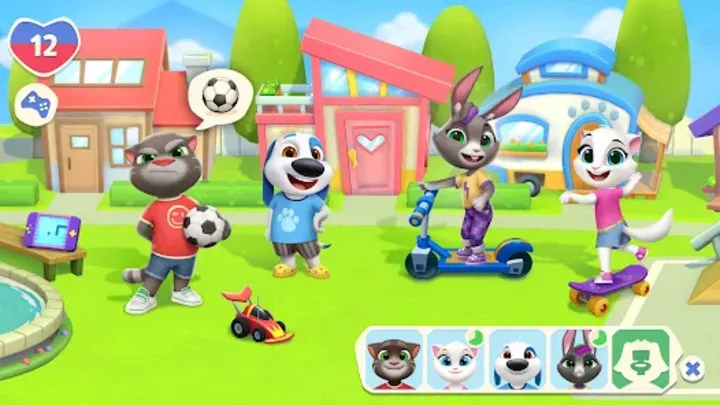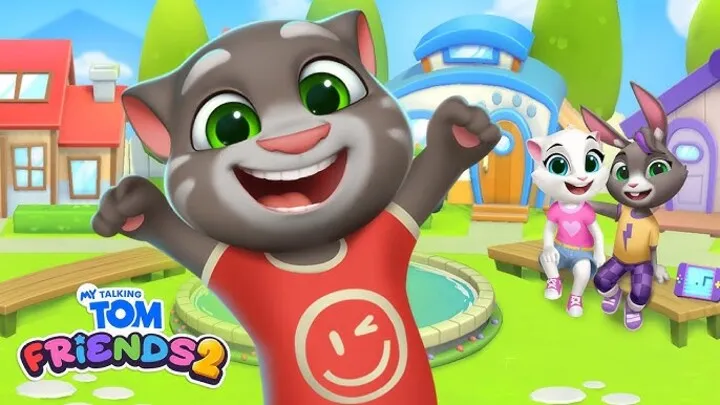My Talking Tom 2 may appear at first glance to be a simple virtual pet game, but players quickly realize that managing Tom’s health and happiness is at the heart of long-term progression. Unlike some casual games, My Talking Tom 2 relies on a layered care system where neglect leads to slower rewards, fewer coins, and limited access to interactive features. The more balanced Tom’s health and happiness meters remain, the more the game opens up in terms of playability.

This article is a complete deep dive into the mechanics, strategies, and hidden tips around Tom’s health and happiness. From feeding routines to handling sickness, from using the medicine cabinet wisely to leveraging minigames for mood boosts, we’ll go step-by-step through the timeline of how players should manage this system. By the end, you’ll know how to keep Tom consistently energized, playful, and productive.
Understanding Tom’s Core Needs
At the base of Tom’s well-being are four critical needs: hunger, energy, hygiene, and happiness. Each of these is represented by a meter that gradually depletes with time and player actions.
Hunger decreases steadily, requiring regular feeding with food items from the fridge or rewarded snacks. Energy is consumed by activities like minigames or playtime, demanding timely naps. Hygiene drops after meals or play sessions, meaning the bathroom or bathtub must be used to restore it. Happiness, however, is influenced by multiple factors—interactions, toys, and engagement across the game.
Recognizing that all these needs interconnect is essential. For example, feeding Tom junk food can restore hunger but lower happiness or cause sickness, which impacts energy. Players must balance each action to avoid creating a chain reaction of problems.
Establishing Feeding Routines
Feeding is the most frequent task in My Talking Tom 2, but many new players treat it casually. Without a structured feeding routine, Tom’s hunger fluctuates unpredictably, and players burn through food supplies quickly.
The key is moderation and timing. Instead of feeding Tom large amounts at once, offer him balanced meals spread throughout the day. Fruits and vegetables contribute positively to health and happiness, while sweets, though tempting, can lower well-being if overused. Meat and hearty meals restore hunger quickly but should be balanced with lighter snacks.
For advanced play, align feeding times with minigame sessions. Feed Tom before active gameplay so his energy and mood remain stable, avoiding sudden interruptions. This creates a predictable rhythm and ensures steady progression.
Managing Tom’s Sleep Cycles
Sleep management is another pillar of Tom’s well-being. After extended activity, Tom becomes tired and less responsive, which lowers happiness if ignored.

Players should guide Tom into naps at optimal times. Short naps restore moderate amounts of energy and allow continued play, while longer overnight sleeps reset his energy bar fully. Ignoring sleep leads to grumpy behavior, which directly impacts his mood meter.
A useful strategy is to put Tom to bed before long breaks in real life, such as during school or work hours. This way, his downtime aligns with the player’s absence, ensuring he wakes refreshed when the game is reopened. Proper sleep scheduling prevents wasted time and maximizes Tom’s availability.
Hygiene and Cleanliness as Happiness Boosters
Tom’s hygiene is often underestimated, but it plays a significant role in overall happiness. A dirty Tom not only looks unkempt but also suffers drops in mood.
Routine hygiene tasks include brushing his teeth after meals, bathing him after play, and taking him to the toilet when his hygiene meter drops. These actions are simple yet impactful, as neglect leads to Tom complaining or acting less playful.
An overlooked tip is to combine hygiene routines with playtime. For example, use bath toys during cleaning to simultaneously raise happiness. This dual-purpose approach ensures Tom feels cared for while keeping meters balanced.
Handling Sickness and Medicine Use
Sickness is one of the trickiest aspects of managing Tom’s health. When he becomes ill, happiness drops sharply, and energy drains faster. Players must act quickly to treat him.
Illness is often signaled by coughing, sneezing, or visual symptoms like spots on his fur. The medicine cabinet offers solutions ranging from pills to syrups, each targeting specific symptoms. Selecting the correct medicine matters—giving the wrong one wastes resources and prolongs illness.
Stockpiling medicine through daily rewards or special events is critical for advanced players. A well-prepared inventory ensures Tom can be treated immediately without waiting for replenishments, minimizing downtime.
Leveraging Toys and Play for Happiness
Toys are one of the most effective tools for boosting Tom’s happiness meter. From bouncing balls to musical instruments, each toy provides interactive fun.

Rotating toys is key to maintaining happiness. Tom becomes bored if the same toy is used repeatedly, leading to diminishing returns. Introducing variety keeps him engaged, and combining toys with player actions (like throwing a ball back and forth) strengthens his happiness response.
Some toys also tie into mini-events or challenges, rewarding coins and tickets. This transforms playtime from simple happiness management into an opportunity for resource farming. Advanced players always balance fun with productivity.
Using Minigames to Maintain Mood
Minigames in My Talking Tom 2 are not just for entertainment—they’re powerful happiness tools. Each minigame session significantly boosts mood while also earning coins.
Choosing the right minigame matters. Quick, low-effort games are perfect for short mood boosts, while longer games maximize happiness and rewards during extended sessions. However, overplaying one game can tire Tom, lowering his energy.
For optimal results, integrate minigame sessions into daily routines. For example, after feeding and cleaning Tom, play two or three rounds of a favorite minigame. This sequence maintains all meters in harmony.
Balancing Health with Rewards
A common mistake among players is focusing on rewards (coins, items) while neglecting Tom’s well-being. Though tempting, overexerting Tom for resource gain creates burnout.
Advanced strategies require balancing. If Tom is hungry, tired, or sick, his productivity in games and interactions plummets. Taking time to restore his needs before chasing rewards ensures efficiency. Players who care for Tom consistently will find they actually earn more resources long-term compared to those who ignore him.
This balance mindset highlights why health and happiness management is not an optional feature—it’s the foundation for all progression.
Long-Term Happiness Planning
Maintaining Tom’s well-being over weeks and months requires forward-thinking. This involves not just responding to needs but planning routines.

Set daily cycles: feeding in the morning, playtime in the afternoon, hygiene in the evening, and long sleep overnight. Predictability ensures no meter dips into the danger zone. Stockpiling food, medicine, and toys through rewards and events provides security against sudden shortages.
Players who build long-term care habits find Tom evolving faster, unlocking customization options, and participating in more events with higher rewards. Consistency, not bursts of activity, is the ultimate strategy.
Advanced Tips for Maximizing Health and Happiness
To truly master health and happiness management, players must employ advanced techniques that go beyond the basics.
- Chain routines: Combine tasks in logical order (feed → clean → play → sleep) to maximize efficiency.
- Event synergy: Use events that offer happiness boosts alongside resource rewards.
- Observation skills: Watch Tom’s behavior closely—grumpiness, yawning, or facial expressions often reveal needs before meters drop too low.
These micro-strategies separate casual players from dedicated caretakers, ensuring Tom remains at peak well-being across all stages of the game.
Conclusion
Managing health and happiness in My Talking Tom 2 is much more than casual care—it’s a layered system of strategy, foresight, and consistency. By establishing feeding routines, aligning sleep with real-world schedules, prioritizing hygiene, treating sickness efficiently, and leveraging play and minigames, players can create an optimal balance that unlocks steady progression.
What seems like simple virtual pet care is actually a deep simulation of resource and mood management. Master it, and Tom becomes not just a companion but the key to long-term success in the game.

















